Published on January 8, 2020
The following piece was written by the Women’s Mining Coalition and ran in the Star News on January 30, 2020.
Process stories – pieces that seek to shine a light on how the world works behind closed doors – are popular in today’s media environment. There’s good reason for this, as it can be difficult for even the savviest and most engaged observer to keep track of the stories behind the headlines as the pace and volume of news continues to grow.
Stories like this have a crucial role to play, and the dogged work of the reporters who build these stories is commendable. But these pieces also come with an often overlooked risk: when the facts aren’t conveyed correctly or completely, process pieces can make current events even more confusing.
Unfortunately, a recent story about Midas Gold’s proposal to develop Idaho’s Stibnite Mining District left out many important details and, in doing so, only told one side of the story. The result is a less informed public – and a less productive discussion about this important project’s future.
At issue is the fact that federal officials within the regulatory bodies overseeing the permitting process have invited Midas – the developer – to take the lead on preparing a draft of a key assessment of the biological impacts of the project, required as part of the review under the Endangered Species Act.
To the casual observer, this seems like a damning revelation, akin to asking the fox to watch the henhouse. In reality – as compelling as that claim may be – this is a common, standard, and fully expected part of the process of reviewing and permitting a major mining development like the Stibnite Gold Project.
Why is this seemingly counterintuitive process standard practice? Because there is – in the words of the Forest Service itself – “a clear need for early, regular, and fully informed coordination among federal agencies and applicants.” By engaging Midas early and in a substantive manner, regulators can minimize conflicts, maximize expertise, and build a strong foundation for their ultimate review and approval.
And make no mistake, the ultimate authority to review and approve this project continues to rest in the hands of the Forest Service. Missing from the recent coverage of Midas’ role in drafting the biological assessment, along these lines, is one key fact: they have only been asked to provide a draft, not a final product. Federal authorities will have complete authority and indeed an obligation to accept, reject, revise, or otherwise utilize the information Midas provides. As Midas notes in a recent blog post, this is the same process that has been used in dozens of other applications.
The process may be unfamiliar, but that doesn’t make it wrong.
The opportunity to play a leading role in drafting the biological assessment has been taken seriously by the company. They have actively engaged with stakeholders ranging from tribes to state and local officials to members of the community. They’ve been transparent and inclusive throughout, and they’ve taken what they’ve heard to heart – revising their restoration plan earlier this year to reflect the community’s goals.
Misplaced focus on the nuts and bolts of permitting – especially if that focus is incomplete – can distract from the merits of the project itself. In this case, Midas’ plan represents the single best hope Idaho has of restoring and reclaiming these long-blighted mining sites. The state will also realize significant job creation, with hundreds of new jobs tied to development and operation. And in addition to the gold mined, the project will also develop a huge quantity of antimony, a resource of significant strategic importance to the U.S., and one that we would otherwise have to continue to import from China. With the right environmental safeguards in place, this project is a clear winner for Idaho and for the nation.
Development projects of this magnitude will always stir strong debate and stronger opinions. Media has a crucial role to play in informing these debates, but to play that role, the full story must be told. Without all the facts, the public can’t make up their mind. The process becomes more difficult to parse. And when that happens, important projects like this one are put at risk.
That’s not good for Idaho or our nation – for our environment, for our economy, or for our future.
The Women’s Mining Coalition (WMC) was founded in 1993 bringing the story of the modern mining industry to our members of Congress. Since then, WMC has continued to advocate for a strong domestic mining industry and grown to include members from all aspects of the mining industry. During annual Washington, DC Fly-Ins, WMC members provide Congressional lawmakers with reliable information about the industry and the importance of reducing the nation’s reliance on foreign minerals. WMC’s advocacy for a strong domestic mining industry focuses on mining’s indispensable role in ensuring the well-being of our families, our communities, and our nation. For more information about WMC, please see our website at: http://wmc-usa.org.
